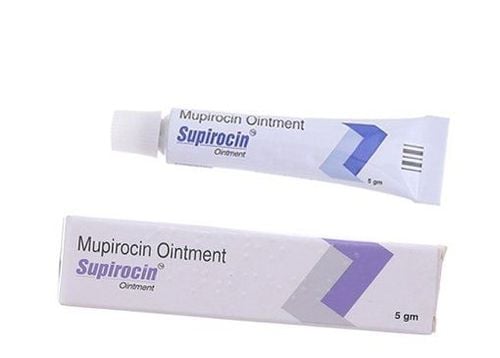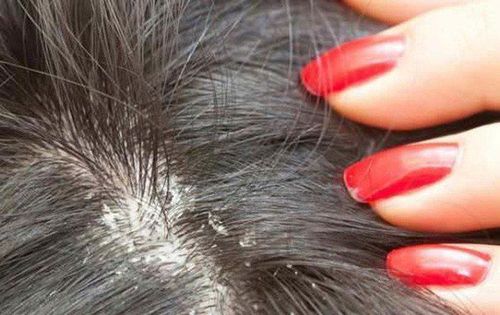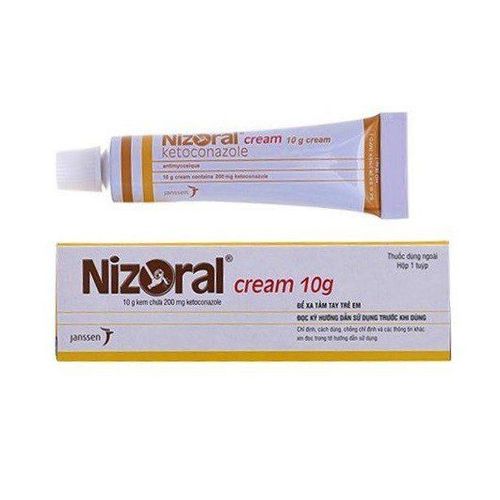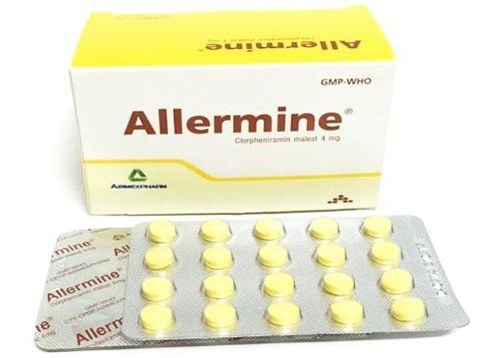This article was professionally consulted by Specialist I, Dr. Tran Van Sang, Dermatologist at the Department of Examination and Internal Medicine - Vinmec Da Nang International General Hospital.
Facial allergies are among the most common dermatological conditions, particularly during the dry winter season. The causes of allergies are diverse, and the manifestations can vary from person to person. Identifying the signs of facial allergies enables appropriate treatment, alleviating symptoms and reducing the risk of recurrence.
1. What Are Facial Allergies with Red, Itchy Rashes?
Facial allergies refer to a prevalent dermatological condition, especially affecting sensitive and delicate skin areas like the face. When facial skin comes into contact with allergens, symptoms such as red, itchy rashes or other forms of skin damage may occur. These allergies can lead to various types of skin lesions, often involving multiple areas of the face.
Causes of facial allergies include:
- Cosmetic allergies
- Seasonal allergies
- Insect or animal allergies
- Contact dermatitis
- Food allergies
- Drug allergies
Symptoms frequently appear on the nose, chin, forehead, and cheeks. In some instances, the allergic reaction can spread to the ears, scalp, and neck. The severity of the condition depends on the underlying cause, the patient's physiological characteristics, and environmental factors.
While symptoms like red, itchy, and rough rashes are typically manageable and do not pose significant health risks, recurrent facial allergies can have lasting consequences:
- Aesthetic impact: Persistent rashes and itching may lead to scarring, adversely affecting the skin's natural appearance.
- Skin damage: Repeated scratching, especially during sleep, may result in severe skin injury and increase the risk of infections.
- Accelerated skin aging: Chronic irritation and scratching can compromise the skin’s structural integrity, weakening its defenses against external factors and hastening the aging process.
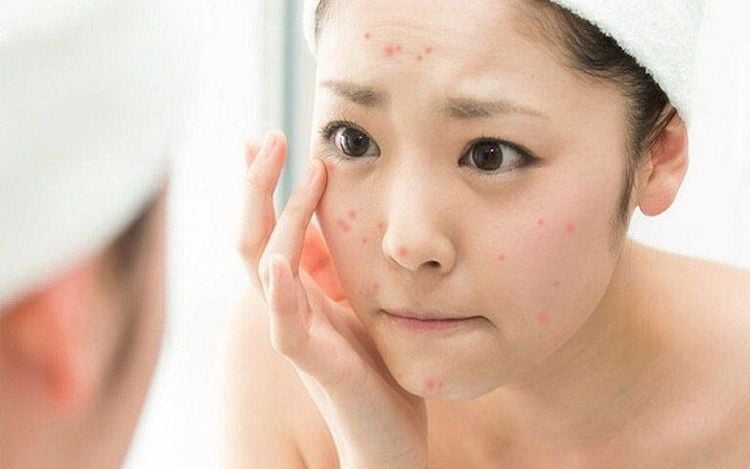
2. Signs of Facial Allergies
Facial allergies, presenting as red, itchy rashes, are often triggered by unsuitable cosmetic products. This condition can lead to increased sebum production, clogged pores, and a favorable environment for bacterial growth.
Symptoms may include burning sensation, persistent itching, swelling, and red rashes that may resemble hives or mosquito bites, as follows:
- Red spots appear on the skin's surface, causing discomfort. In children, this condition may lead to irritability, fatigue, and frequent scratching of the affected areas.
- Itchy rashes may appear as small, isolated spots or larger patches. The intensity and duration of itching vary depending on the individual's condition and age.
- Itchy rashes often develop in delicate or concealed areas of the skin and may spread to other parts of the body.
- There are many types of itchy rashes, the most common of which are red bumps that appear as blisters or patches. Continuous scratching can exacerbate the condition, leading to skin damage, increased risk of infection, and potential scarring.
Additional signs of facial allergies include:
- Hives: Raised bumps resembling mosquito bites or welts, often accompanied by severe itching.
Atopic dermatitis: Characterized by erythematous patches, sometimes with blisters. The appearance of blisters may indicate a severe allergic reaction requiring immediate dermatological attention to avoid infection. - Contact eczema: Defined erythematous patches on the face, frequently associated with blisters and persistent itching.
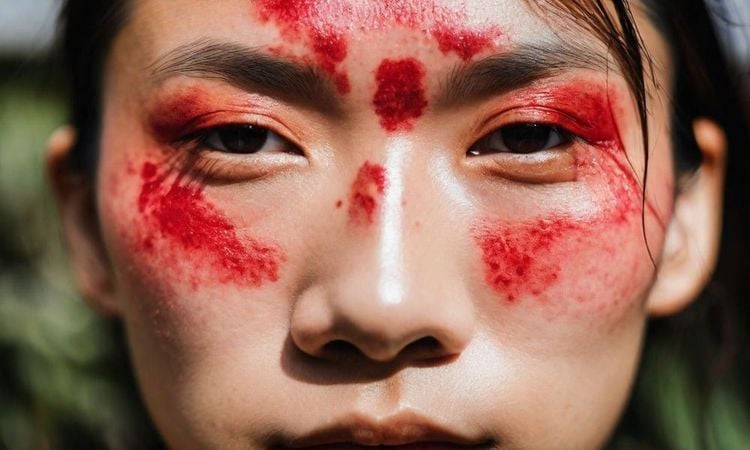
3. How to Reduce Facial Allergies at Home
Symptoms of facial allergies, such as red, itchy rashes, can often improve or resolve with proper treatment. To minimize their impact on appearance and quality of life, patients can adopt the following measures at home:
- Avoid excessive rubbing or scratching: This can exacerbate the allergic reaction and worsen symptoms.
- Limit heavy makeup or multiple layers of creams, because these can clog pores.
- Reduce sugar and stimulant intake.
- Avoid high-risk allergenic foods like spicy foods, shrimp, and crab.
- Wear a mask when outdoors to shield the skin from harmful agents and limit direct exposure to sunlight.
- Use a gentle cleanser suitable for your skin type, and regularly clean blankets, pillows, and towels.
- For individuals with a history of cosmetic allergies, check for adverse reactions before using new products.
- Wash hands and face thoroughly before applying makeup. Avoid applying makeup to areas showing unusual signs such as eye pain or itching.
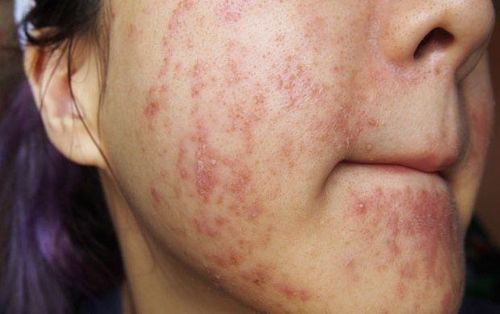
Patients are encouraged to document their food, medication, and cosmetic usage to help identify potential allergens. This practice facilitates the diagnosis of the allergen and aids in effectively managing allergic reactions.
4. Preventing Facial Allergies, Red Rash, and Itching Due to Food Allergies
Treatments for food allergies include:
- Anti-allergy medications: Antihistamines and corticosteroids, such as methylprednisolone, can be administered orally or intravenously. Vitamin C supplements and other anti-inflammatory medications may also be prescribed.
- For anaphylactic shock due to food allergies, adrenaline is the first-line treatment. It may be administered intramuscularly, subcutaneously, or intravenously, depending on the patient’s condition and the Ministry of Health's treatment protocols.
Preventive measures for individuals with a history of food-related facial allergies include:
- Determine the food groups that cause allergies and strictly avoid their consumption and contact.
- Carefully review menus and ingredient lists to avoid allergenic foods.
- Maintain a safe distance from food preparation areas to minimize exposure to allergenic vapors.
- Refrain from consuming dead seafood or unhygienic food, as these may harbor high levels of histamine due to bacterial contamination.
- Be cautious of cross-allergies. For example, individuals allergic to crab should avoid other seafood such as squid, shrimp, and clams.
In conclusion, facial skin allergies with red rash and itching are common conditions caused by various factors, leading to symptoms such as hives, eczema, or skin darkening. Early recognition of these signs is essential for prevention, timely intervention, and treatment. Proactive management helps minimize complications and improve the quality of life.
Please dial HOTLINE for more information or register for an appointment HERE. Download MyVinmec app to make appointments faster and to manage your bookings easily.
To arrange an appointment, please call HOTLINE or make your reservation directly HERE. You may also download the MyVinmec app to schedule appointments faster and manage your reservations more conveniently.
